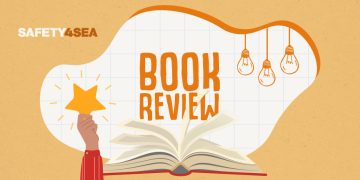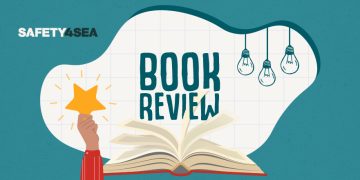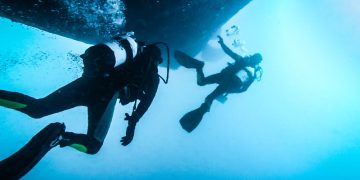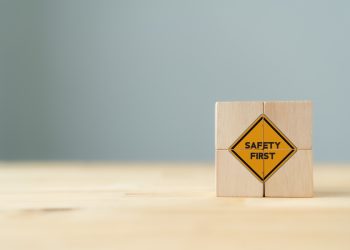The vetting process has been introduced in the maritime industry since 2004, after the implementation of TMSA and VIQ / SIRE in later stage. Vetting process is the tool to monitor a ship company or a ship and involves a review of the vessel’s technical and operational characteristics, and its safety and compliance record. The goal of vessel vetting is to ensure that the ship is safe and compliant with relevant regulations.
Vetting practice has been expanded to dry cargo section through RightShip which implements the RiSQ for ships vetting and DryBMS – which is not finalized yet – for Companies vetting. One of the items assessed in all aforementioned documents is mooring operation. More specifically, companies and ships are required to address a set of items and prove compliance with the required best practices and expectations.
TMSA v.III (2017)
TMSA in Elements 6 and 6A include requirements for mooring. As required, company should have in place:
- Procedures covering the full range of mooring activities that the company’s fleet may be involved in, including specific operations such as single buoy mooring/STS transfers.
- Mooring equipment including fittings and mooring lines are effectively inspected, maintained, tested and documented.
- Operations are thoroughly planned and safely executed, especially mooring at terminals that have not been previously visited.
- Compliance with procedures is assured by a verification and audit plan
More Specifically:
- 6.3.3 – The SMS includes procedures for non-routine or specialized cargo and ballast operations undertaken in the fleet. …including SPM, conventional buoy mooring
- 6A.1.1 – Procedures for mooring and anchoring operations are in place for all vessel types within the fleet
- 6A.1.2 – Maintenance, testing and routine inspections of mooring and anchoring equipment is included in the planned maintenance system
- 6A.1.3 – The company has procedures to manage the condition of mooring ropes, wires, mooring tails and joining shackles for all fleet vessels
- 6A.2.1 – Detailed procedures address each different type of mooring operation likely to be undertaken by fleet vessels
- 6A.2.3 – Procedures ensure that vessels remain safely moored at all times
- 6A.2.4 – Procedures are in place for the inspection, maintenance and replacement of wires, ropes, tails and ancillary equipment
- 6A.3.1 – Procedures identify requirements for personnel involved in mooring operations
- 6A.3.2 – Measures are taken to optimise on board mooring arrangements to ensure the safety of vessel personnel
- 6A.3.3 – Procedures address the use of all ancillary craft used in mooring and towage operations
- 6A.3.4 – A process ensures that all mooring equipment and fittings comply with the latest industry guidance
- 6A.4.1 – The company actively seeks involvement of manufacturers, to enhance the management of mooring equipment including ropes and wires
- 6A.4.2 – All available means are used to ensure that vessels can safely moor at terminals being visited for the first time
- 6A.4.3 – Comprehensive audits are completed by a suitably qualified and experienced company representative. The audit uses observation of mooring operations
All the above concern procedures to be implemented through SMS or other mooring guidance
SIRE 2.0
SIRE is the questionnaire for Ship vetting. Mooring is included in different parts and specifically:
a. 3.2.7. Comprehensive mooring and anchoring audit by a company representative
b. 3.2.8. Behavioral Competency Assessment Program onboard conducted for operations (including Mooring)
c. 5.8.1. Safety inspection of the main deck and mooring areas
d. All Chapter 9 – Under the title Mooring and Anchoring.
-
- 9.1.1Testing and correct operation of the mooring winch brakes
- 9.1.2 Was the vessel satisfactorily moored
- 9.1.3 Line Management Plan (LMP) implementation
- 9.1.4 Mooring lines, tails and mooring shackles.
- 9.4.1 Mooring team supervision and composition
- 9.4.2 Dangers of working with and around mooring lines
- 9.5 STS operations
- 9.6 Single Point Mooring
- 9.7. Shuttle Tanker Mooring Systems
e. 12.5.1. Deck machinery and mooring equipment in sub-zero temperatures
f. Related photos required (numbering follows the same with SIRE Guidance)
-
- 1. Bow area from dead ahead.
- 7. Forecastle port side looking towards fairleads.
- 8. Forecastle starboard side looking towards fairleads.
- 9. Port or starboard windlass.
- 10. Forward main deck showing condition of deck (and external framing).
- 12. One mooring winch showing brake setting arrangement.
- 90. Bow mooring arrangement from forward looking aft showing chain stopper.
- 91. Bow mooring arrangement from aft looking forward showing winch.
Almost all above items have reference the OCIMF MEG-4 to be followed.
DryBMS (version January 2021)
DryBMS has a specific subject area dedicated for mooring – Subject Area 19 Mooring and Anchoring
| Level | KPI | Expectations |
| Basic | 19.1.1 | The company has procedures for mooring, anchoring and use of tugs |
| 19.1.2 | The company has procedures for providing safe access (for pilots and ship/shore)
There is a maintenance program in place for all mooring, anchoring and access equipment |
|
| 19.1.3 | The company has procedures to ensure that ropes, wires, joining shackles and stoppers are in good condition | |
| Intermediate | 19.2.1 | Fully detailed procedures are in place for mooring, anchoring and use of tugs |
| 19.2.2 | The company has procedures to cover keeping the vessel securely moored alongside | |
| 19.2.3 | The company has procedures that specify replacement of in-service mooring lines and may include the rotation of mooring lines | |
| Advanced | 19.3.1 | The company has procedures to ensure that ropes, wires, joining shackles and stoppers are regularly inspected to identify defects that may lead to failure |
| 19.3.2 | Mooring winch brakes should be tested in accordance with winch brake manufacturer’s or shipbuilder’s guidance or following repair or modification of associated parts; tests are conducted at least annually | |
| Excellence | 19.4.1 | Comprehensive mooring inspections and audits are carried out by competent shore staff at regular intervals |
| 19.4.2 | The company maintains a database for port facilities and relevant mooring requirements |
Similarly with TMSA, above items can be addressed within SMS procedures or with specific Company’s guidance for Mooring Operations.
RiSQ 3.0 (February 2023)
The revised RiSQ has summarized the requirements for mooring in Section 10 – Mooring. New terminology has been introduced as (SDMBL, LDBF etc) to be in line with OCIMF MEG-4 (which is used as reference) and the IMO’s MSC. 1175 rev.1 which will come into force 1-1-2024 and also includes the same terminology. The list with RiSQ 3.0 requirements for mooring includes the following:
- 10.1 Has the company established guidelines and procedures for the inspection, maintenance and wear zone management of the mooring lines and are they being implemented?
- 10.2 Does the vessel’s manager carry out regular safe mooring campaigns, learning from near misses and accidents related to mooring operations and are these shared with the fleet?
- 10.3 Are the certificates of mooring lines and mooring tails available on board?
- 10.4 Do mooring lines and mooring tails comply with industry guidelines and are they in good order?
- 10.5 Is there a procedure for testing the winch brake rendering setting and is it being tested regularly?
- 10.6 Are mooring lines correctly deployed and tended?
- 10.7 Are there sufficient crew members on board to assist in the mooring operation, check and tend
- 10.8 Are all mooring lines on winches correctly reeled on drums, and if made fast ashore, are winch brakes secured and winches out of gear?
- 10.9 On split drum winches, have the split drums been set up correctly after the completion of mooring operation?
- 10.10 If the mooring tails are used, have they properly connected to the main mooring lines in accordance with industry guidance?
- 10.11 Are the mooring ropes stowed clear of the deck and are mooring stations well lit, clean and free from oil leaks?
- 10.12 Have heaving lines been constructed with a monkey’s fist at one end and are they free of any added weighting material?
- 10.13 Is the whole mooring deck area marked with clearly visible signage and considered a danger?
- 10.14 Are appropriate stoppers in use and are the mooring ropes turned up to bitts correctly?
- 10.15 Do controls, linkages, operating levers, brake drums, brake linings and pins of winches appear to be in good order?
- 10.16 Are the pedestal fairleads, roller fairleads and other rollers free of grooving, well-greased and free to turn?
- 10.17 Are the fairleads, rollers, bitts chocks and other items of mooring equipment clearly marked with the relevant SWL?
- 10.18 Are the windlasses, anchors, locking bars and cables in good order, operating effectively and is their maintenance incorporated in the plan maintenance system?
Note: Items 10.19- 10.23 refer to anchoring
Best Practice
Summarizing the above there are three sections that a Company should focus on to conform with vetting requirements for Mooring:
1. To implement effective mooring procedures for all related mooring cases (applicable to managed ships), including verification process through mooring audits by Company’s competent personnel or third parties.
2. On board equipment related to mooring to be as required in respect of strength, condition, maintenance, documented support (certification) and marking.
3. Crew should be familiar to follow Company’s procedures and use of relevant equipment.































































